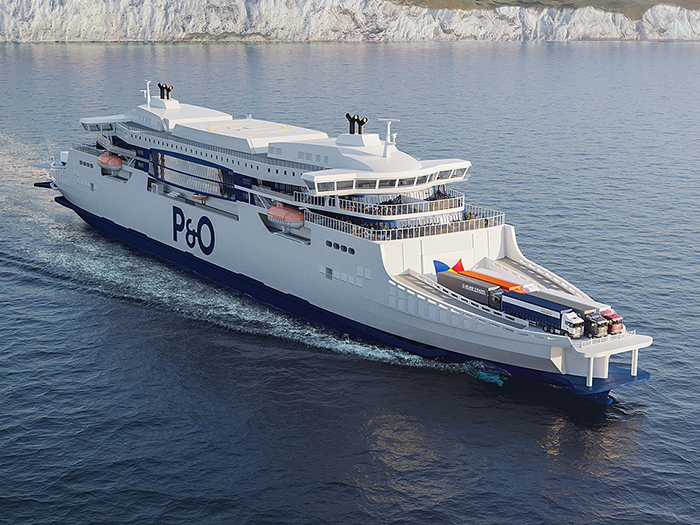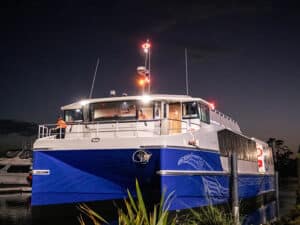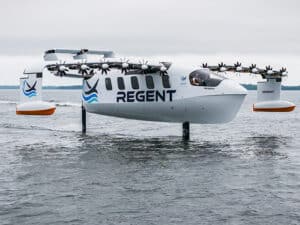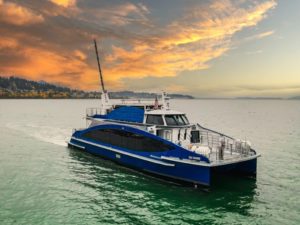
New P&O Ferries double-enders will feature fuel saving ABB solutions
Written by Nick Blenkey
230 meter long ferries will be builtto a double ended design, with a bridge and two Azipods at either end
ABB has won a contract from Guangzhou Shipyard International Ltd., China, covering the supply of a full scope of integrated solutions for two new vessels the yard is building for Dover, U.K., headquartered P&O Ferries.
The hybrid propulsion solution, using electric power from 8.8 MWh batteries and diesel generators, will cut fuel consumption on P&O Ferries’ Dover-Calais route by 40%—or about one ton on each round-trip. The batteries will provide full power for harbor maneuvering and stays in port and will prepare the vessels for a zero-emission future once more electric shore charging stations are available.
The 230 meter long vessels will be the largest passenger and freight ferries ever to sail the Dover-Calais route when they enter service in 2023. The double ended design vessels will each be equipped with four 7.5 MW Azipod propulsion units.
The benefits of bridge-to-propeller integration proved decisive in selecting the hybrid solution for the new ferries, according to P&O Ferries.
In addition to Azipod propulsion and energy storage, the new ships will feature a comprehensive scope of ABB solutions to cover power and propulsion, automation and power energy management. ABB’s Power and Energy Management System (PEMS) is closely integrated with the electrical system and ensures optimal use of the vessel’s total power resources by improving the information flow across shipboard systems.
“The P&O ferries under construction at the Guangzhou Shipyard International are truly iconic. We are delighted to strengthen our strategic cooperation with the technology leader ABB and to work together on this leading-edge project, considering ABB’s proven supplier status in the global ferry market,” said Mr. Zhongqian Chen, Chairman of Guangzhou Shipyard International.
“We are proud to have ABB technology at the heart of P&O Ferries’ sustainability program, as it transitions to the zero-emission future envisaged for shipping,” said Juha Koskela, Division President, ABB Marine & Ports.
The ferries are being built to a double-ended design, with a pair of Azipod units and a bridge at each end, avoiding th need to turn ships in port. The captain and senior officers will simply walk to the opposite bridge, saving seven minutes on each outbound and return journey and one ton of fuel – a sixth of what is used on the 21-mile crossing.
The vessels will also be equipped with ABB Ability Marine Pilot Control, an intelligent maneuvering and control system that enables safer, more efficient operations by automating some navigational tasks to allow bridge officers to focus on optimizing overall ship control and positioning.
The vessels’ engines will be equipped with ABB’s Power2 two-stage turbocharging system that will further improve power efficiency and help achieve up to five percent in fuel savings. In addition, the Power2 system will help reduce up to 60% of nitrogen oxide emissions.




